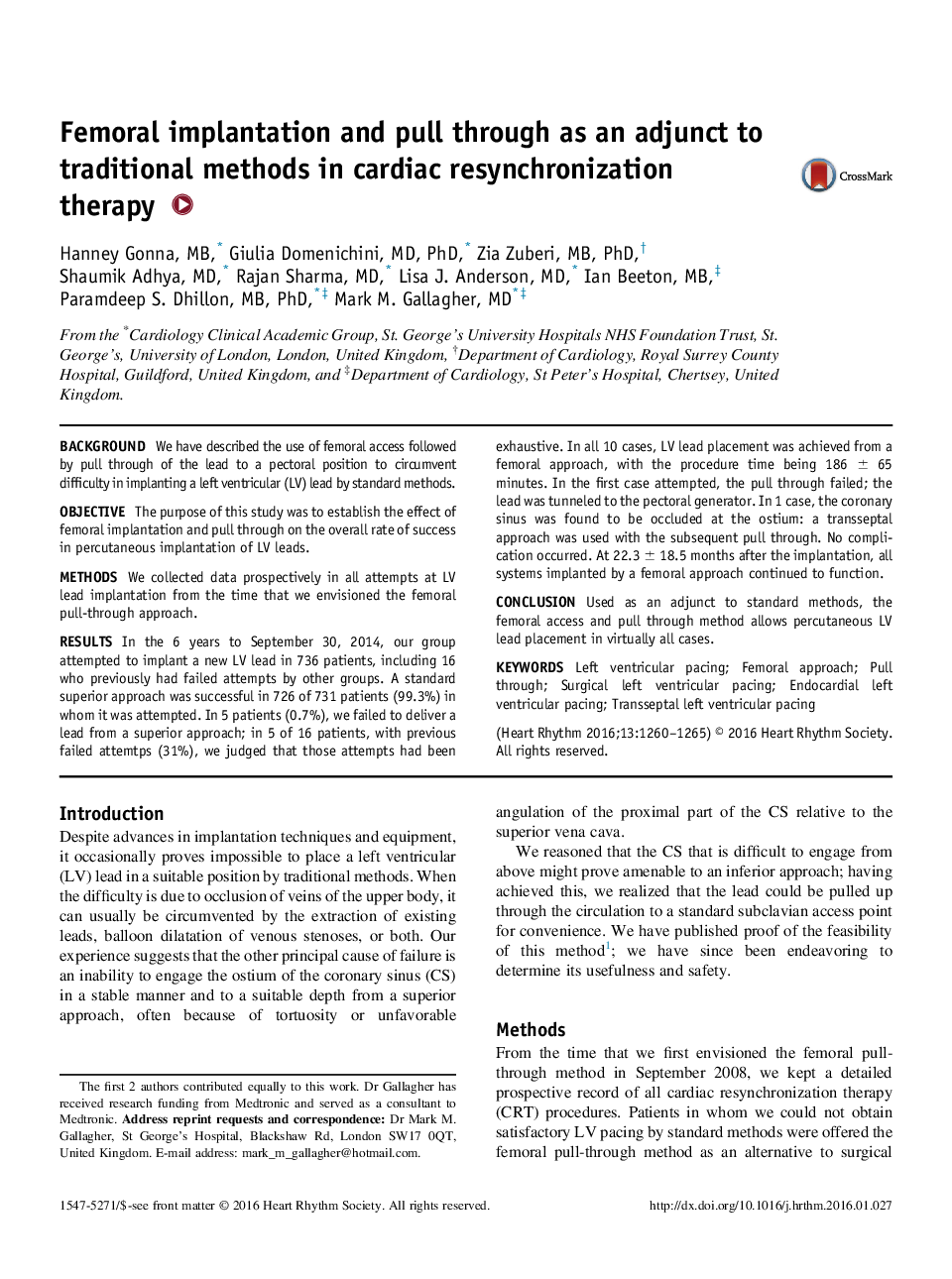| Article ID | Journal | Published Year | Pages | File Type |
|---|---|---|---|---|
| 2921710 | Heart Rhythm | 2016 | 6 Pages |
BackgroundWe have described the use of femoral access followed by pull through of the lead to a pectoral position to circumvent difficulty in implanting a left ventricular (LV) lead by standard methods.ObjectiveThe purpose of this study was to establish the effect of femoral implantation and pull through on the overall rate of success in percutaneous implantation of LV leads.MethodsWe collected data prospectively in all attempts at LV lead implantation from the time that we envisioned the femoral pull-through approach.ResultsIn the 6 years to September 30, 2014, our group attempted to implant a new LV lead in 736 patients, including 16 who previously had failed attempts by other groups. A standard superior approach was successful in 726 of 731 patients (99.3%) in whom it was attempted. In 5 patients (0.7%), we failed to deliver a lead from a superior approach; in 5 of 16 patients, with previous failed attemtps (31%), we judged that those attempts had been exhaustive. In all 10 cases, LV lead placement was achieved from a femoral approach, with the procedure time being 186 ± 65 minutes. In the first case attempted, the pull through failed; the lead was tunneled to the pectoral generator. In 1 case, the coronary sinus was found to be occluded at the ostium: a transseptal approach was used with the subsequent pull through. No complication occurred. At 22.3 ± 18.5 months after the implantation, all systems implanted by a femoral approach continued to function.ConclusionUsed as an adjunct to standard methods, the femoral access and pull through method allows percutaneous LV lead placement in virtually all cases.
